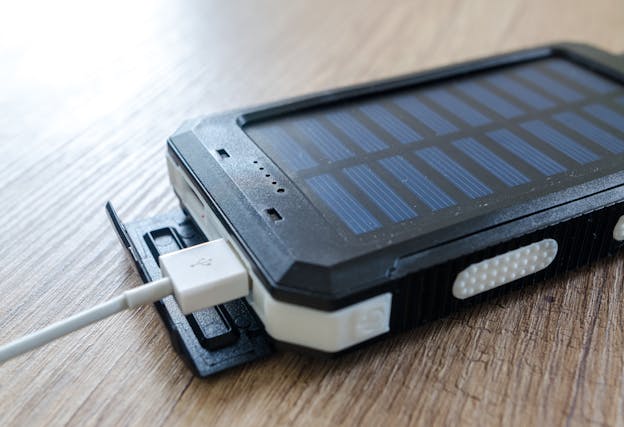In today’s tech-driven world, selecting the right tools to maintain and power devices is crucial. One such tool is the battery charger—a seemingly simple gadget that plays a significant role in extending battery life, ensuring safety, and optimizing performance. Choosing the right battery charger is not just about convenience; it’s about making informed decisions that save money, protect your devices, and reduce environmental impact.
This guide delves into everything you need to know about choosing the right battery charger. From understanding the basics of chargers to exploring advanced features, this comprehensive article will equip you with the knowledge to make a confident choice. By the end, you’ll not only know what makes a charger effective but also how to match it to your specific needs.
Let’s explore the ins and outs of choosing the right battery charger, ensuring your devices remain powered and ready when you need them most.
Understanding the Basics of Battery Chargers
Battery chargers come in various shapes, sizes, and functionalities. Understanding the different types, such as trickle chargers, smart chargers, and fast chargers, is the first step in choosing the right battery charger. Each type caters to specific needs:
- Trickle Chargers: Ideal for maintaining battery levels over long periods.
- Smart Chargers: Offer advanced safety features and stop charging when the battery is full.
- Fast Chargers: Provide quick power but may generate more heat.
Identifying which charger suits your battery type—lithium-ion, nickel-metal hydride, or lead-acid—is also crucial.
Key Features to Look for in a Battery Charger
When choosing the right battery charger, key features like compatibility, charging speed, safety mechanisms, and portability come into play. For instance:
- Compatibility: Ensure the charger matches the voltage and capacity of your battery.
- Charging Speed: Fast chargers are great for emergencies, but smart chargers optimize battery health.
- Safety Features: Overcharge protection, short-circuit prevention, and thermal management ensure safe use.
- Portability: Compact designs are perfect for travelers or those on the go.
Understanding these features helps narrow down your choices, making choosing the right battery charger easier.
Assessing Your Battery Needs
Not all batteries are created equal, and neither are their chargers. Consider the devices you own and their power requirements. Are you charging a car battery, a camera battery, or a smartphone? Different batteries require varying voltage levels and charging currents.
Choosing the right battery charger means matching the charger’s specifications with the battery’s requirements. Overcharging or undercharging can reduce battery lifespan or, worse, cause safety hazards.
Environmental Impact of Battery Chargers
Choosing the right battery charger also involves considering environmental factors. Opt for energy-efficient models that consume less electricity and reduce waste. Look for chargers certified by energy efficiency standards such as Energy Star.
Additionally, choosing chargers with recyclable materials or those designed for multiple battery types minimizes environmental impact, promoting sustainable practices.
How Technology Has Improved Battery Chargers
Modern chargers come equipped with advanced technologies such as:
- Microprocessors: For precise charging and monitoring.
- Wireless Charging: Eliminates the need for cables.
- Battery Reconditioning: Revives older batteries.
These innovations make choosing the right battery charger not just about functionality but also about leveraging cutting-edge features to enhance user experience.
Comparing Popular Battery Charger Brands
Leading brands like Nitecore, Anker, and NOCO specialize in creating reliable chargers for various needs. Comparing features, reviews, and warranties is essential when choosing the right battery charger.
For example, Anker focuses on portability and USB compatibility, while NOCO excels in automotive battery chargers with rugged designs. Evaluating these options ensures your investment meets your expectations.
Common Mistakes to Avoid
When choosing the right battery charger, many people overlook critical factors such as:
- Ignoring compatibility with battery types.
- Opting for cheaper models without safety certifications.
- Focusing solely on speed at the expense of battery health.
Avoiding these mistakes ensures you choose a charger that’s both effective and safe.
Tips for Maintaining Your Battery Charger
To get the most out of your charger, proper maintenance is key. Keep it clean, avoid overloading, and store it in a cool, dry place. Regular inspection for wear and tear ensures longevity and reliability, helping you stay powered for years to come.
Why Choosing the Right Battery Charger Matters
Selecting the correct charger affects device performance, safety, and environmental impact. A well-chosen charger preserves battery health, reduces waste, and saves money in the long run. The process of choosing the right battery charger is an investment in convenience, safety, and sustainability.
Conclusion
The journey of choosing the right battery charger involves understanding your needs, evaluating features, and making informed decisions. A good charger enhances device performance, ensures safety, and contributes to a greener planet.
Remember, the next time you’re in the market for a charger, these insights will guide you to make the best choice. Choosing the right battery charger is more than a purchase—it’s a commitment to efficiency, safety, and sustainability.





